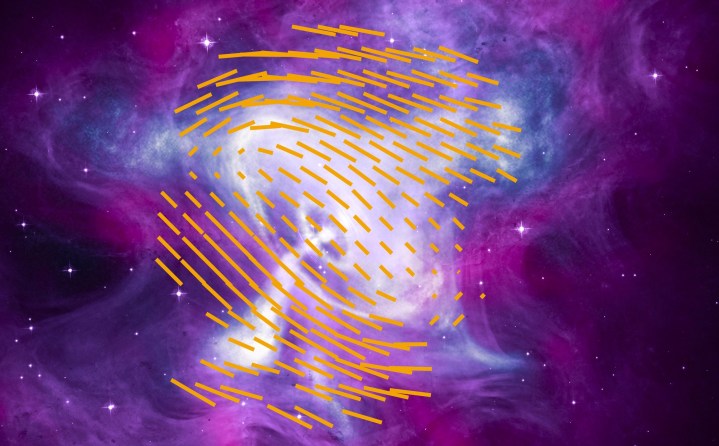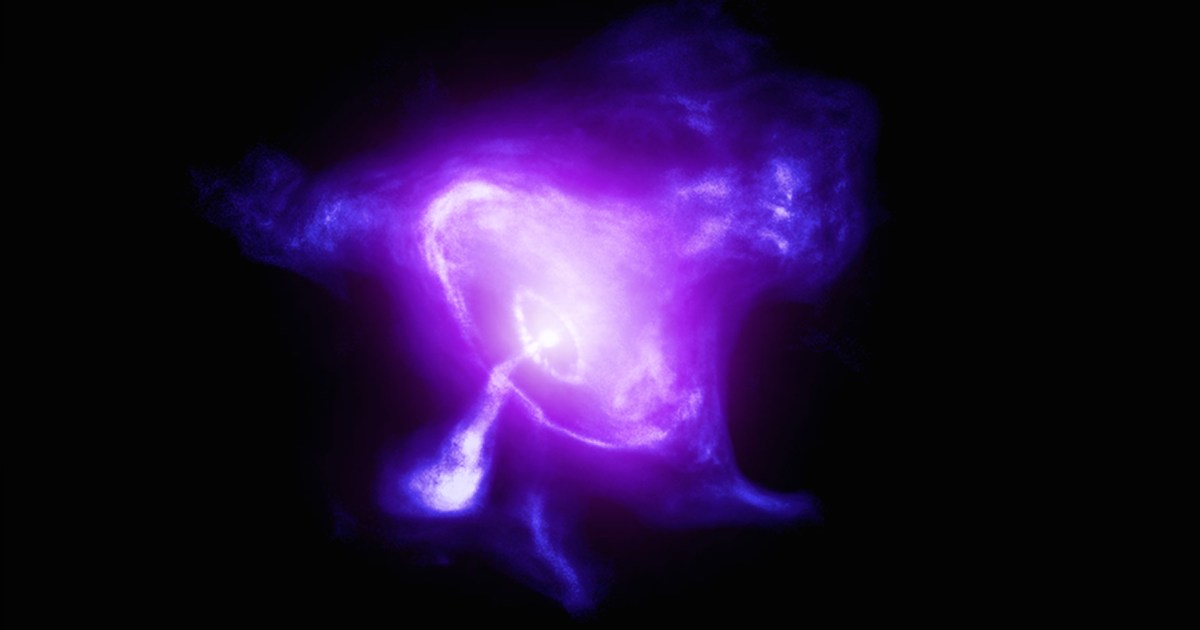A new perspective on the Crab Nebula, one of astronomy’s most beautiful creations, has been provided by a NASA X-ray instrument. The Imaging X-ray Polarimetry Explorer (IXPE) observatory was launched in December 2021 and is presently orbiting Earth, observing X-ray sources like black holes and pulsars from space. Despite being an essential tool for scientists to understand the universe, X-ray astronomy is not always easy for the general public to comprehend because conveying visual results can be challenging. However, recent findings with IXPE demonstrate how an X-ray view of the cosmos can uncover intriguing features not visible in other wavelengths.
The Crab Nebula resulted from a supernova that exploded 6,500 light-years from Earth. It was first seen by Chinese astronomers in 1054. In the visible light wavelength, it appears as a cloud of glowing dust and gas, with delicate shapes formed by the supernova explosion, as seen in images from the Hubble Space Telescope. However, the nebula appears quite different in the X-ray wavelength. IXPE observed the nebula’s magnetic field, as indicated by the orange lines in the image below.

Using polarization, which displays the direction of electromagnetic fields, IXPE was able to detect X-rays emanating from the pulsar at the nebula’s heart, as well as showing that some regions of the nebula are polarized differently. Earlier observations of the Crab Nebula included looking at it via another X-ray instrument, the Chandra X-ray Observatory, which could identify the jets formed by the gas and dust. However, IXPE’s polarized lenses provided an alternative view of the nebula.
“The Crab is one of the most-studied high-energy astrophysical objects in the sky. So it is extremely exciting that we could learn something new about this system by looking through IXPE’s ‘polarized lenses’,” stated Michela Negro of NASA’s Goddard Space Flight Center, one of the researchers, in a statement.
Findings from the research have been published in the journal Nature Astronomy.
Editors’ Recommendations
Denial of responsibility! TechCodex is an automatic aggregator of the all world’s media. In each content, the hyperlink to the primary source is specified. All trademarks belong to their rightful owners, and all materials to their authors. For any complaint, please reach us at – [email protected]. We will take necessory action within 24 hours.
Alex Smith is a writer and editor with over 10 years of experience. He has written extensively on a variety of topics, including technology, business, and personal finance. His work has been published in a number of magazines and newspapers, and he is also the author of two books. Alex is passionate about helping people learn and grow, and he believes that writing is a powerful tool for communication and understanding.


